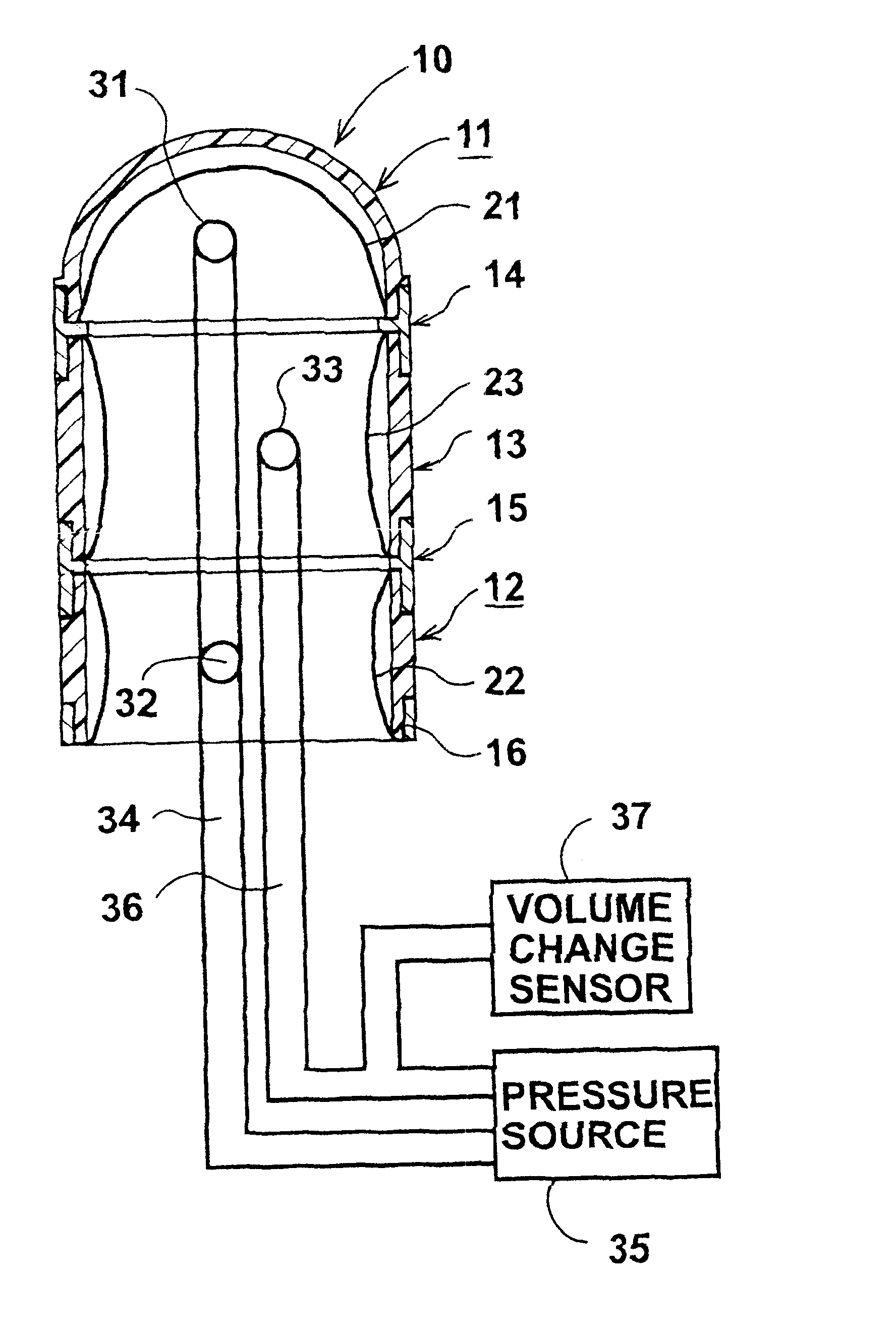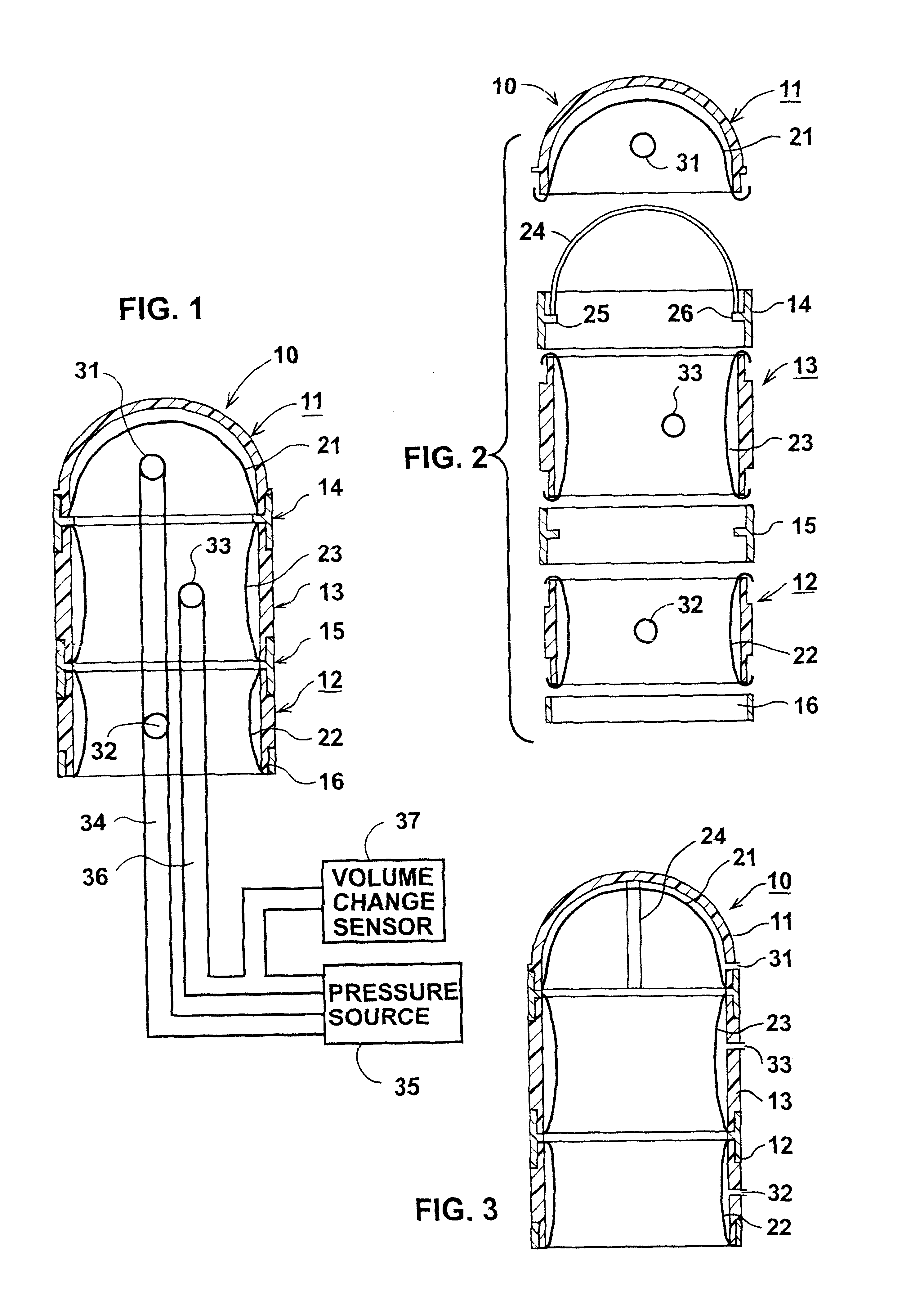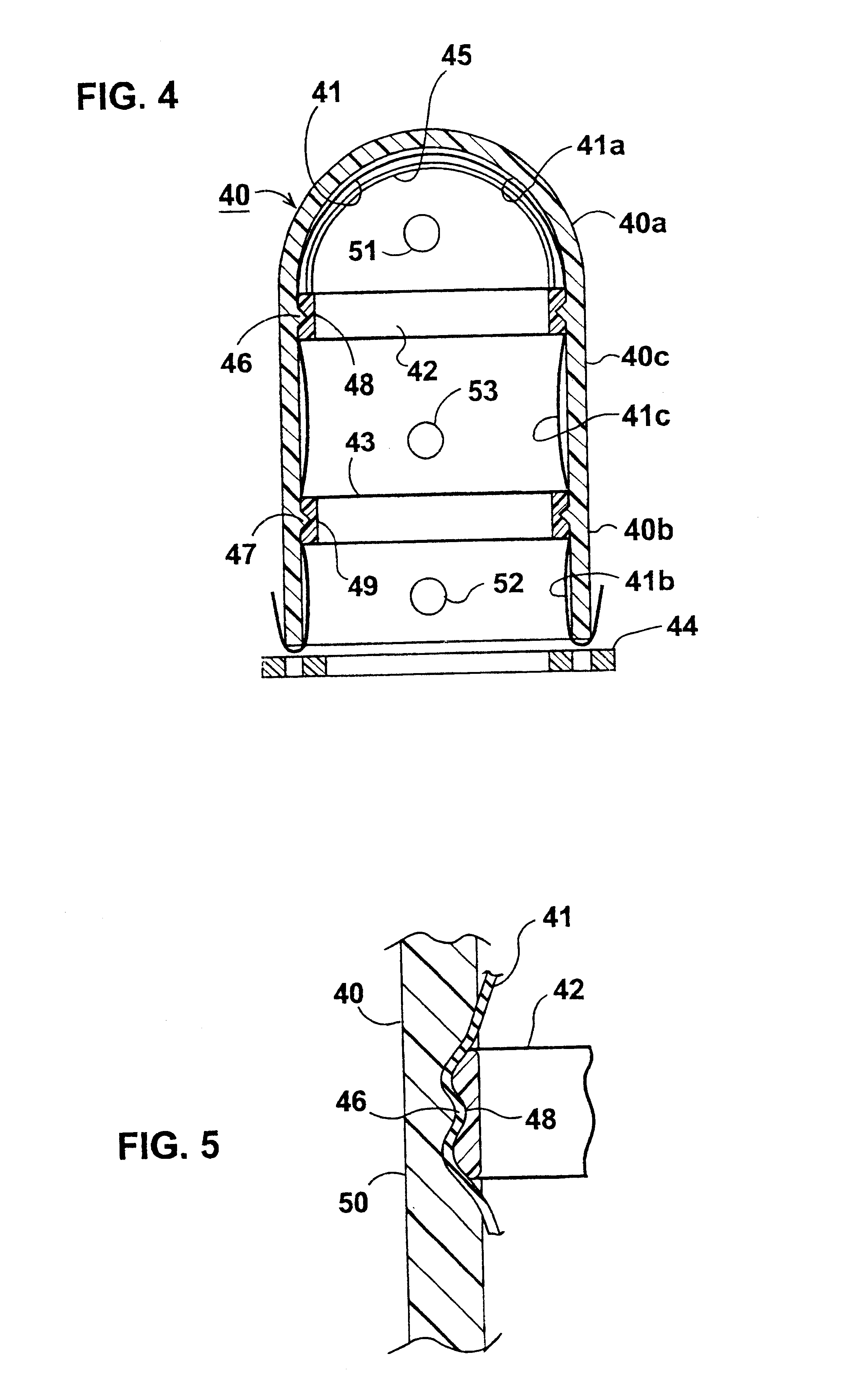Probe devices particularly useful for non-invasive detection of medical conditions
a technology of probes and sensors, which is applied in the field of probes particularly useful for non-invasive detection of medical conditions, can solve the problems of affecting the accuracy of the sensor, the sensor used in such devices is extremely sensitive to the movement of the finger, and the volume changes, so as to achieve the effect of less sensitivity to the movement of the body part, simple construction and volume production
- Summary
- Abstract
- Description
- Claims
- Application Information
AI Technical Summary
Benefits of technology
Problems solved by technology
Method used
Image
Examples
Embodiment Construction
The Device of FIGS. 1-3
The device illustrated in FIGS. 1-3 is generally similar to those described in the above-cited Publication WO98 / 04182, in that it includes: a housing 10, for receiving a body part of a patient, in this case a digit (preferably a finger) of the patient, to detect certain changes in the physiological condition of the patient; pressurizing means for applying a pressure field, preferably a static, uniform pressure field, around the patient's digit when received in the housing 10; and a sensor for sensing changes in the patient's digit related to changes in blood volume therein. The pressurizing means includes a deformable membrane of elastomeric material defining one or more fluid chambers with the housing, and a pressure source for applying a static fluid pressure to the chambers.
Publication WO98 / 04182 discloses a number of constructions in which the housing is constituted of a single section having a single fluid chamber, or two sections each having a fluid cham...
PUM
 Login to View More
Login to View More Abstract
Description
Claims
Application Information
 Login to View More
Login to View More - R&D
- Intellectual Property
- Life Sciences
- Materials
- Tech Scout
- Unparalleled Data Quality
- Higher Quality Content
- 60% Fewer Hallucinations
Browse by: Latest US Patents, China's latest patents, Technical Efficacy Thesaurus, Application Domain, Technology Topic, Popular Technical Reports.
© 2025 PatSnap. All rights reserved.Legal|Privacy policy|Modern Slavery Act Transparency Statement|Sitemap|About US| Contact US: help@patsnap.com



